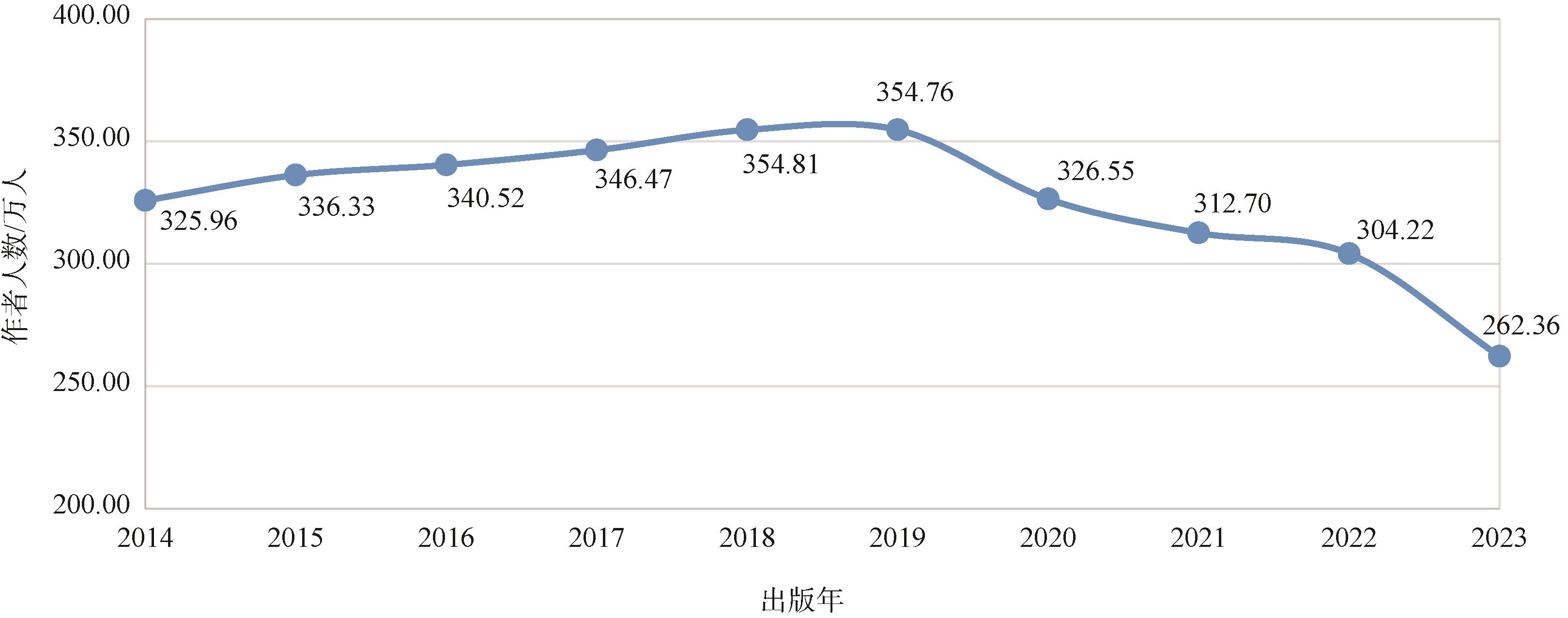 PDF(1715 KB)
PDF(1715 KB)


 PDF(1715 KB)
PDF(1715 KB)
 PDF(1715 KB)
PDF(1715 KB)
基于知网数据的高被引学者评价方法
Evaluation Method for Highly Cited Scholars based on CNKI data
[目的/意义] 旨在客观、科学地衡量学者的影响力,识别近10年国内科研成果丰富、学术影响力杰出的学者群体,引导中国学者将更多优秀成果首发在国内期刊。 [方法/过程] 主要采用文献计量学方法进行遴选和评价。单篇论文影响力采用论文引证标准化指数(Paper Citation Standardized Index,简称PCSI)作为评价指标,论文作者贡献权重分配采用优化后的调和分配法,在每位学者所有发文基础上计算“作者总PCSI”作为高被引学者的遴选指标。 [结果/结论] 遴选出“高被引学者TOP 1%”约3万人,“高被引学者TOP 5%”约8.9万人。这一研究成果首次实现对我国学者的全面定量评价,为学术界提供识别高端人才队伍的新视角,有利于激发学者持续创新,同时鼓励国内优秀科研成果回流。遴选结果显示:在学科分布上,人文社会科学领域中的应用经济学、教育学、工商管理、公共管理和农林经济管理等学科入选高被引学者人数最多,科技领域中的临床医学、中医学、电气工程、护理学和土木工程等学科入选高被引学者人数最多;在区域分布上,高被引学者数量最多的是北京、江苏、上海、广东和湖北等教育科研发达地区;在机构分布上,清华大学、北京大学、武汉大学、中国人民大学、北京师范大学是入选学者数量最多的5个机构。
[Purpose/Significance] This study aims to measure the influence of scholars objectively and scientifically, identify a group of scholars with rich scientific research achievements and outstanding academic influence in China in the past 10 years, and guide Chinese scholars to publish more outstanding achievements in domestic journals. [Method/Process] The selection and evaluation process primarily employed bibliometric methods. For assessing individual paper impact, we utilized the Paper Citation Standardized Index (PCSI) as the evaluation metric. Author contribution weights were allocated using an optimized harmonic allocation method. The final selection of highly cited scholars was based on calculating the 'Total Author PCSI' derived from each researcher's complete publication record. [Result/Conclusion] Approximately 30,000 individuals were selected as "Top 1% Highly Cited Scholars", and around 89,000 individuals were selected as "Top 5% Highly Cited Scholars". This research achievement has achieved a comprehensive quantitative evaluation of Chinese scholars for the first time, providing a new perspective for the academic community to identify high-end talent teams, which is conducive to stimulating scholars' continuous innovation and encouraging the return of excellent domestic scientific research achievements. The selection results show that in terms of disciplinary distribution, applied economics, education, business administration, public management, and agricultural and forestry economic management have the highest number of highly cited scholars selected in the fields of humanities and social sciences. In the field of technology, disciplines such as clinical medicine, traditional Chinese medicine, electrical engineering, nursing, and civil engineering have the highest number of highly cited scholars selected. In terms of regional distribution, the regions with the highest number of highly cited scholars are Beijing, Jiangsu, Shanghai, Guangdong, and Hubei, which are developed in education and scientific research. In terms of institutional distribution, Tsinghua University, Peking University, Wuhan University, Renmin University of China and Beijing Normal University are the five institutions with the largest number of selected scholars.

高被引学者 / 作者总PCSI / PCSI指数 / 人才评价 / 学者评价
highly cited scholars / author's total PCSI / PCSI / talent evaluation / scholar evaluation
| [1] |
中共中央办公厅, 国务院办公厅.关于分类推进人才评价机制改革的指导意见[EB/OL].[2025-06-27].
General Office of the Central Committee of the Communist Party of China, General Office of the State Council. Guiding Opinions on Promoting the Reform of Talent Evaluation Mechanism by Classification [EB/OL]. [2025-06-27].
|
| [2] |
中共中央办公厅, 国务院办公厅.关于深化项目评审、人才评价、机构评估改革的意见[EB/OL]. [2025-06-27].
General Office of the Central Committee of the Communist Party of China, General Office of the State Council. Opinions on Deepening the Reform of Project Evaluation, Talent Evaluation and Institution Assessment [EB/OL]. [2025-06-27].
|
| [3] |
贾佳, 潘云涛, 马峥.中国高被引科学家基本特征研究——以2014汤森路透高被引科学家为例[J].科技与出版, 2014(12): 149-151.
|
| [4] |
褚农农, 乌云其其格, 姜桂兴.中国大陆高被引科学家群体状况研究[J]. 全球科技经济瞭望, 2015, 30(12): 7-13.
|
| [5] |
吴琪.从汤森路透全球“高被引科学家”名单论我国高校科研发展[J].燕山大学学报(哲学社会科学版), 2015, 16(2): 132-135.
|
| [6] |
赵兵, 郭才正, 钱景.基于Clarivate Analytics “Highly Cited Researchers”的中美高被引科学家分析[J].农业图书情报学刊, 2017, 29(7): 75-77.
|
| [7] |
尹志欣, 谢荣艳.我国顶尖科技人才现状及特征研究——以汤森路透2015高被引科学家为例[J].科技进步与对策, 2017, 34(1): 136-140.
|
| [8] |
靳军宝, 曲建升, 吴新年, 等.2014—2019年我国高被引科学家群体特征计量分析[J].科技管理研究, 2021, 41(3): 202-210.
|
| [9] |
刘蓓蕾, 袁润.浅析Clarivate Analytics中国内地高被引科学家分布与科技和经济发展的关联[J].中国集体经济, 2021(4): 78-81.
|
| [10] |
赵宁, 范巍, 张锐昕.中国“全球高被引科学家”结构特征和成长规律分析——基于2014—2020年“全球高被引科学家”榜单数据[J].科技管理研究, 2022, 42(1): 208-214.
|
| [11] |
尹志欣, 由雷.从高被引科学家看中国顶尖科学人才现状及发展[J].全球科技经济瞭望, 2024, 39(5): 36-45.
|
| [12] |
魏向阳.“双一流”背景下地方高校高层次人才引进与长效机制的构建[J].河南教育学院学报(哲学社会科学版), 2019, 38(4): 94-97.
|
| [13] |
姜凡. “双一流”背景下地方高校高层次人才引育研究——基于地方高校高被引学者群体的实证分析[J].教育评论, 2021(7): 86-91.
|
| [14] |
刘俊婉.高被引科学家论文产出力的计量分析[J].情报杂志, 2013, 32(10): 67-71.
|
| [15] |
赵鑫, 朱佳妮. “高被引学者”现象研究的知识立场及其热点演变[J].上海交通大学学报(哲学社会科学版), 2024, 32(8): 108-121.
|
| [16] |
Q/CNKI PJ04—2010 《中国学术期刊影响因子年报(人文社会科学)》系列标准 [S].北京:中国学术期刊(光盘版)电子杂志社, 2010.
Q/CNKI PJ04—2010.Annual Report for Chinese Academic Journal Impact Factors(Social Science) Series Standards [S]. Beijing: China Academic Journals (CD Edition) Electronic Publishing House Co., Ltd, 2010.
|
| [17] |
Q/CNKI PJ01.1—2009 《中国学术期刊影响因子年报(自然科学与工程技术)》系列标准 [S].北京:中国学术期刊(光盘版)电子杂志社, 2009.
Q/CNKI PJ01.1—2009 Annual Report for Chinese Academic Journal Impact Factors (Natural Sciences and Engineering Technology) Series Standards [S]. Beijing: China Academic Journals (CD Edition) Electronic Publishing House Co., Ltd, 2009.
|
| [18] |
伍军红, 肖宏, 任美亚, 等.PCSI:一种单篇论文被引频次标准化方法[J].图书情报工作, 2020, 64(23): 22-30.
|
| [19] |
|
| [20] |
|
| [21] |
|
/
| 〈 |
|
〉 |